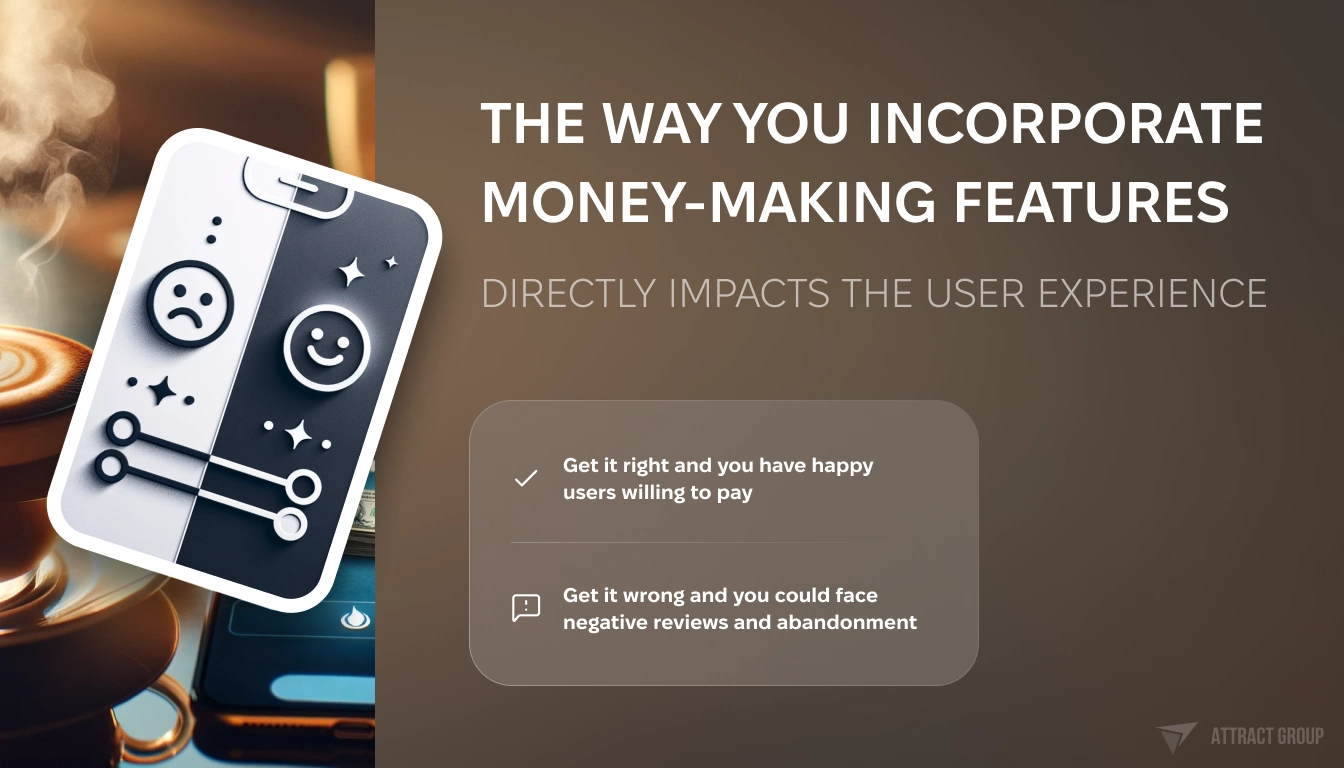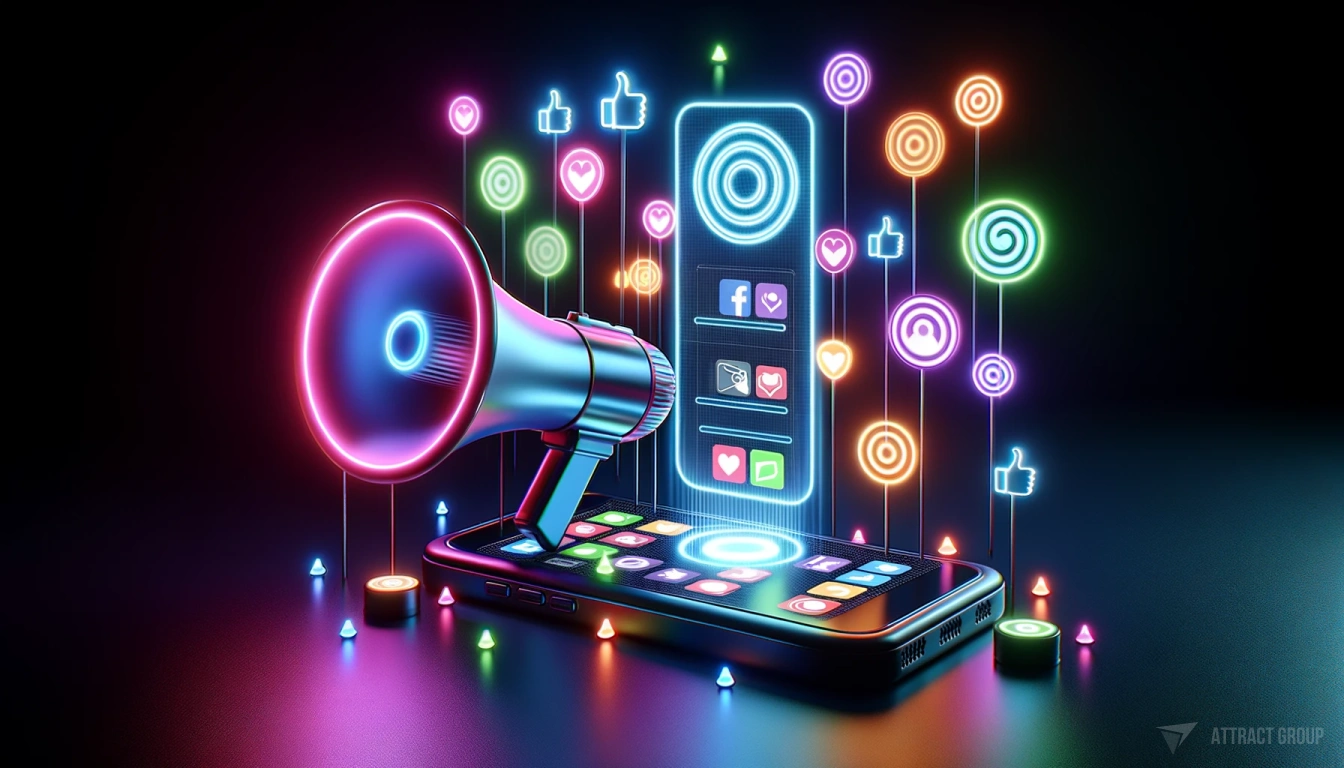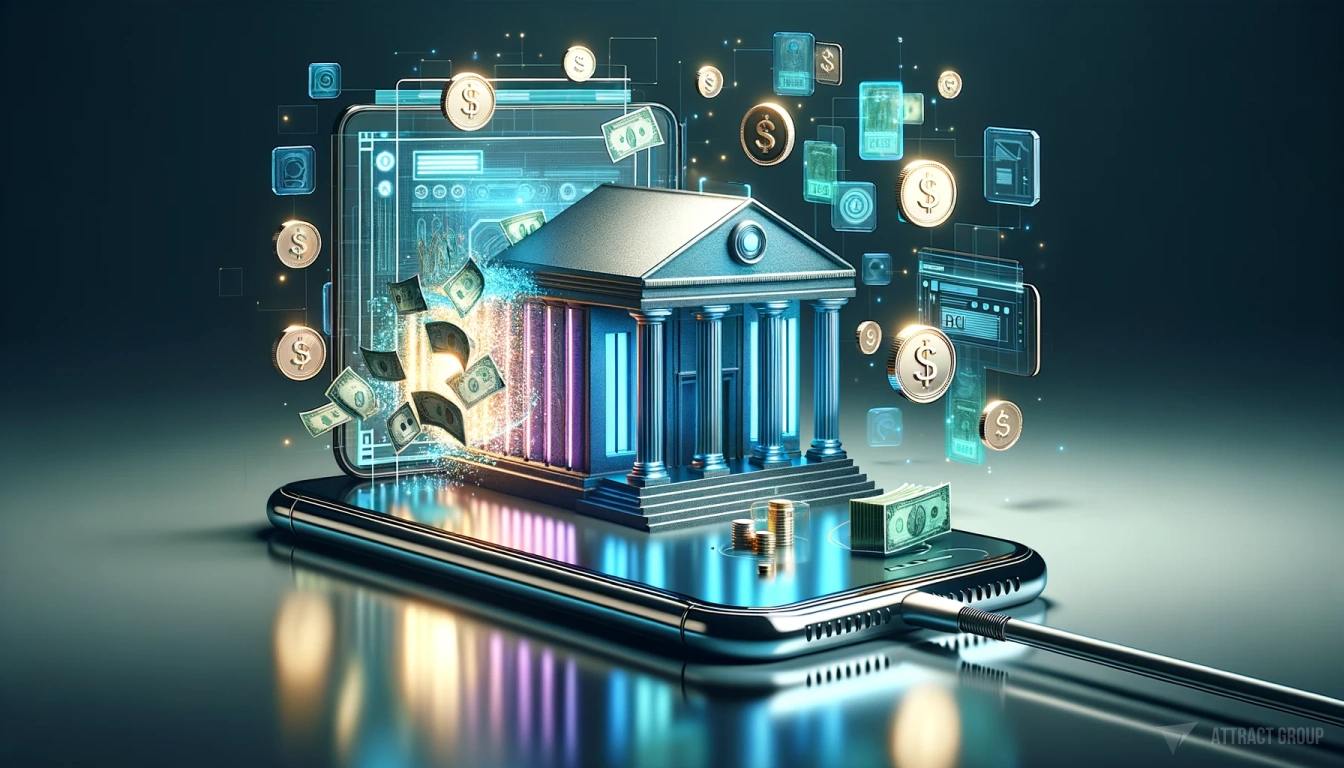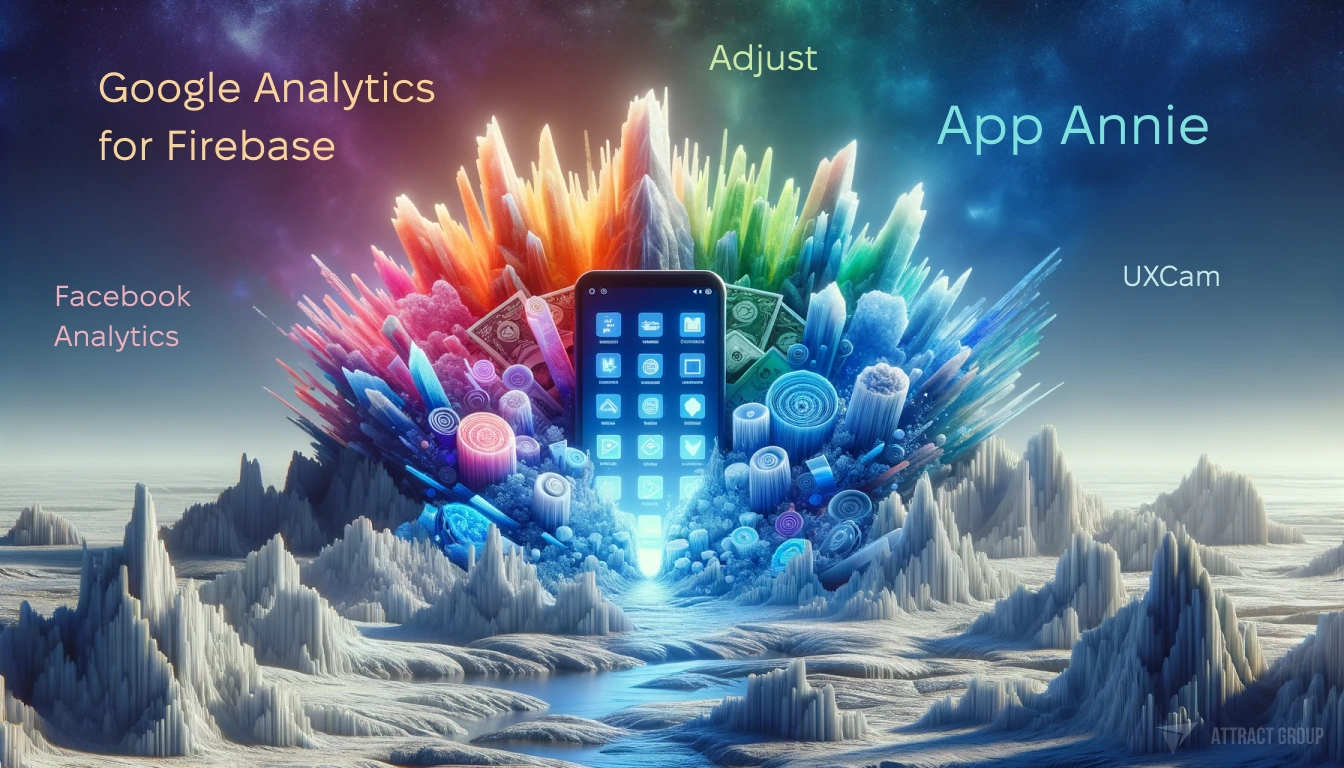Mobile App Monetization Strategies: A Guide to Turning Your App Into a Money Maker
 30 October 2023
30 October 2023? Listen to the Summary of this article in Audio
With over 5 million apps in the major app stores, competition is fierce when it comes to capturing user attention and retention. A key component of app success is effective monetization – implementing features that will generate revenue while maintaining a great user experience.
This comprehensive guide will walk you through the most popular strategies for monetizing your mobile app and turning it into a thriving business. We’ll look at proven models, cutting edge techniques, and tips for seamlessly integrating money-making functionality into your app.
The Importance of Monetization in App Development
Monetization is a make-or-break consideration when planning, building, and marketing an app. According to data from Statista, over 90% of developers are not able to sustain business from their apps due to a lack of monetization strategy. Without revenue generation, apps become unsustainable passion projects.
That’s why considering monetization early in the app development process is crucial. The way you incorporate money-making features directly impacts the user experience – get it right and you have happy users willing to pay. Get it wrong and you could face negative reviews and abandonment.

With the right strategy tailored to your app’s purpose, target audience and growth goals, you can set yourself up for a profitable venture. This guide will explore the most effective options.
The Landscape of Mobile App Monetization
The mobile app market is projected to grow to over $935 billion by 2023. With 25% year-over-year growth, app monetization strategies are more important than ever.
In terms of revenue models, paid apps only account for 30% of total app revenue. The other 70% comes from free apps incorporating advanced monetization features like in-app advertising and in-app purchases. This indicates the power of “freemium” models that attract users at no upfront cost and then convert them into paying customers.
Paying attention to emerging monetization trends can give you an edge. For example, subscription models are fast gaining popularity, expected to drive over 80% of app revenue by 2024 according to data.ai.
The key is to pick the strategies that align with your app category, target audience, and unique value proposition. A tailored monetization roadmap is essential right from the initial stages of development.
Video: “How to Monetize an App”
In the ever-evolving landscape of mobile apps, figuring out how to monetize your app is a critical challenge. The video “How to Monetize an App” offers an in-depth guide to navigate this complex terrain. Hosted by the founder of Vivino, a successful wine app with over 60 million users, the video dives into five distinct strategies for app monetization. From selling products and services to leveraging user data, the video covers the good, the bad, and the complexities of each method. Whether you’re a seasoned developer or a newbie in the app world, this video serves as a comprehensive roadmap to monetizing your app effectively:
Comparison of Monetization Strategies
When diving into the world of mobile app monetization, understanding the landscape is crucial. Here’s a comparative analysis of prevalent monetization strategies, painting a picture of what each has to offer in terms of revenue generation, user experience, and implementation difficulty:
| Monetization Strategy | Revenue Generation | User Experience | Implementation Difficulty |
|---|---|---|---|
| In-App Advertising | Moderate to High: The sky’s the limit, contingent on user traffic and engagement. | Low to Moderate: A delicate balance. Too many ads can drive users away. | Moderate: Requires a good grasp of ad networks and formats. |
| Freemium Model | Moderate to High: Potentially lucrative, dependent on the value of premium features. | High: Generally positive, with free access fostering goodwill. | Moderate to High: Striking the right balance between free and premium features is an art. |
| In-App Purchases | High: Especially with enticing, well-priced offerings. | Moderate to High: Favorable, provided the purchases enhance the app’s value. | Moderate: Secure, seamless transaction process is crucial. |
| Affiliate Marketing | Low to Moderate: Varies, hinging on the relevance and appeal of affiliate offers. | Moderate: Decent, especially if the promoted products resonate with the user base. | Low to Moderate: Finding the right affiliates is primary. |
| Subscription Model | High: Reliable stream from subscribed users. | High: Excellent, assuming the subscription value proposition is strong. | Moderate to High: Demanding a compelling, continually updated content or service offering. |
Each monetization strategy has its unique flavor, with varying levels of revenue potential, user experience, and implementation hurdles. The right choice hinges on your app’s nature and the value it seeks to provide. A well-thought-out monetization strategy can transform your app from a digital playground to a robust revenue generator.
In-App Advertising
In-app advertising involves displaying ads within your app to generate revenue through impressions and clicks. It is one of the most common app monetization models, used in over 80% of free apps according to Statista.

Implementing in-app ads comes with the advantage of not requiring direct payment from users. You can monetize their eyeballs while offering your app for free. The key lies in maintaining balance – you want non-intrusive ads that don’t ruin user experience.
There are several types of in-app ads to choose from:
- Banner Ads: These are static, rectangular banners prominently displayed at top or bottom of app screen. They have low click-through rates but high reach.
- Interstitial Ads: Full screen ads that cover the interface. They have higher engagement but can be annoying if not timed properly.
- Native Ads: Embedded directly into app interface, like suggested content. Allows for more seamless experience.
- Video Ads: In-app video ads before or during content. High engagement but possible lag due to loading.
Your app category plays a role in which ad formats work best. For example, native ads integrate smoothly in content/news apps while interstitial ads have high performance for gaming apps. Make sure to A/B test different options.
Some key advantages of in-app advertising include:
- Low barrier to implementation: Get ad SDKs from networks like AdMob or Facebook Ads. Can be integrated in a few lines of code.
- Cost-effective user acquisition: Ad viewers counted as impressions/clicks helps drive discovery.
- Flexibility of ad types/placements: Find the right balance for each screen and user flow.
- Revenue opportunity for free apps: Get paid without charging users upfront.
However, some downsides to look out for:
- Distracting interface: Poorly timed/placed ads damage user experience.
- Slow load times: Large video/rich media ads in particular can slow things down.
- Low conversion rates: Even popular apps see only 1-5% clicks/conversions on ads.
- Ad blindness: Users trained to ignore ads that don’t match context.
- Complex optimization: Testing required to maximize ad placements/formats.
With in-app advertising, the focus should be providing value to users first in order to achieve revenue goals. Contextual, unobtrusive ads presented at natural breaks in user flow will lead to best results.
Freemium Model
The freemium model involves offering your app for free, but limiting certain features only to paid users. This “free trial” approach helps attract and onboard a large user base, a portion of which convert to paying customers unlocking the full app experience.

Here are some updated statistics on the effectiveness of the freemium model:
- As of 2023, approximately 54% of app developers use freemium models, with 33% generating revenue from this approach (source).
- Freemium games tend to see significantly more downloads than paid games. While it’s challenging to quantify the exact increase, it’s clear that the freemium model is more profitable for mobile titles than paid releases (source).
- The conversion rate from freemium to paid users varies widely, with an average range of 1% to 10%. Typically, a good freemium conversion rate is between 2% and 5% (source1, source2).
The key to successfully implementing freemium lies in understanding your value proposition and your audience. You need to identify which features can be locked as premium to incentivize upgrades.
For example, a music streaming app would limit song catalog size for free users. A dating app may restrict profile views or messaging capabilities in the free version. Limitations should impact core app functionality and drive upgrades, but not completely degrade free experience.
Some best practices for optimizing your freemium model:
- Gate complementary features, not entire app categories. For example, limit number of daily matches in a dating app, not access to matches completely.
- Make upgrade quick and seamless with in-app purchase options
- Highlight and remind users of paid features at points of restriction.
- Offer time-limited fully unlocked experiences to hook users.
- Provide value through free version first before upsell.
- Ensure free experience aligns with audience expectations.
- Continuously test pricing thresholds and upgrade call-to-actions.
Freemium requires meticulous execution, but done right can help maximize both user base and revenue. The viral growth of free users will far outweigh conversion percentages.
In-App Purchases
In-app purchases (IAPs) monetize by letting users make incremental purchases to unlock premium functionality and content within your app. According to App Annie, IAPs are used in over 90% of mobile apps across games and non-game categories.

IAP implementation requires back-end development work to process transactions. Typically app developers integrate third-party SDKs like Google Billing or Stripe to enable in-app payments.
Some categories of IAPs that are proven revenue generators:
- Virtual Currency: For points or coins, popular in gaming apps. Drives engagement.
- Premium Content: Additional features, levels, catalogs etc. unlocked after purchase.
- Customization: Unique avatars, themes, designs purchased by users. Enhances personalization.
- Subscriptions: Make entire app or bundles premium-only for recurring fee.
- No Ads: One time purchase to remove app ads permanently.
For non-game apps like streaming services, the average transaction value from IAPs can range from $2 for basic add-ons to $10 or more for subscriptions. For mobile games, virtual goods IAPs show an average spend of $37 per paying user.
Some pointers to drive IAP success:
- Make upgrade points frictionless requiring minimum effort/information
- Offer both one-time unlocks as well as recurring subscriptions
- Highlight and advertise unique value of premium purchases
- Use segmentation to customize offerings to user preferences
- Maintain balance between paid and free content volume/quality
- Analyze cohorts to identify your most enthusiastic buyers
When implemented strategically, in-app purchases can not only generate direct revenue but also dramatically increase user engagement and retention over time.
Our team can help implement the right strategy for your app!
Affiliate Marketing
Affiliate marketing involves earning commissions by promoting or selling other companies’ products or services within your app. When you steer your app traffic towards affiliate partners, you get a cut of any resulting purchases and subscriptions.

According to research, affiliate programs generate revenue for over 15% of free apps, both games and non-games.
Some examples of affiliate marketing models for apps:
- Promoting e-commerce products related to your app niche. A fitness app recommending gear/apparel.
- Referring users to paid software affiliated with your industry. A design app promoting creative cloud subscriptions.
- Curating deals/offers from brands your audience may like. A travel app highlighting hotel and flight discounts.
To implement affiliate marketing, you first need to research programs related to your niche and apply to join them as a partner. Popular mobile affiliate networks include CJ Affiliate, Impact and Rakuten Marketing.
Some best practices for maximizing affiliate revenue include:
- Only promote relevant, high-quality products that strengthen user trust.
- Test different affiliate banners and product recommendations to determine high-converting placements.
- Time promotions at points when users are primed for purchases e.g. completing an activity.
- Offer incentives like app rewards or currency for signing up for affiliate programs.
- Segment your users to target affiliate offers by their preferences and behaviors.
While the earning potential varies widely based on your niche and audience, affiliate marketing can become a significant revenue stream given the large volumes of app users. With the right tactics, you can turn your traffic into a passive earnings channel.
Subscription Model
The subscription model involves users paying a recurring fee, typically monthly or yearly, to gain access to all or premium features of your app. It generates predictable, recurring revenue.

According to forecasts, subscription models will drive over 80% of total app revenue by 2024. Their surging adoption demonstrates their strong monetization power if applied appropriately.
Some types of apps best suited to subscriptions include:
- Media/content apps e.g. video or music streaming services
- Productivity apps e.g. cloud storage, task managers
- Gaming apps to unlock bonuses, ad-free experience etc.
- Education apps for accessing courses and materials.
- News/magazine apps for premium articles and issues.
The Advantages of the subscription model include:
- Recurring revenue: Monthly/yearly payments mean steady cash flow.
- Higher customer lifetime value: Longer-term commitment vs one-time purchases.
- Ongoing value demonstration: Chance to deliver ever-growing premium features.
- Price flexibility: Offer different subscription tiers.
However, subscriptions also come with some challenges:
- User resistance: Many users hesitation for recurring charges on apps.
- Cancellations: Churn risk if you cannot demonstrate persistent value.
- Apple fees: Apple takes 15-30% commission on App Store subscriptions.
- Segment carefully: Subscriptions only work for certain app types and audiences.
Best practices for maximizing subscription success include offering free trials, not limiting free features too heavily, making cancellation easy, and automating retention communication. Overall subscriptions allow for some of the highest revenue and retention if implemented strategically.
Data Monetization
Data monetization involves generating revenue from user data like behaviors, interests, usage patterns, and demographics collected in your app. This can be sold to third parties or used for targeted in-app advertising.

According to research, 85% of business revenue will come from data monetization by 2022. For apps, user data represents a hugely valuable asset if utilized responsibly.
Some examples of data monetization:
- Segmenting users for targeted push notifications and in-app messaging that converts better.
- Selling aggregated anonymized data to research firms interested in your audience’s preferences.
- Enhancing personalized recommendations and customization based on user traits.
- Crafting tailored premium subscriptions for different user personas.
- Allowing brands to target your audience with contextually-relevant native ads.
To maximize the value of your user data ethically, follow data protection best practices like:
- Anonymizing any data sold to external parties.
- Making collection and usage policies transparent.
- Giving users data access control and opt-out choices.
- Never selling personal user information.
- Securing data against breaches.
Learn more about our approach!
Used judiciously, data is hugely powerful for understanding your users on a deeper level and serving them better. Handled correctly, it can enhance personalization and monetization without compromising privacy.
Transaction Fees
Transaction fees involve charging a small percentage fee on selected transactions conducted within your app. This monetizes core app activities like payments, bookings, and peer-to-peer exchanges.

Over 25% of non-gaming apps generate revenue through transaction fees. They are commonly seen in ride-sharing apps, food delivery apps, e-commerce apps, and more.
Some examples of transaction fees in apps:
- Ridesharing apps like Uber charge a percentage cut on every ride booked through their platform. This monetizes their core transaction of ride booking.
- Food delivery apps like DoorDash collect a commission on every order placed through them. This monetizes their core transaction of meal ordering and delivery.
- E-commerce apps facilitating marketplace sales can charge transaction fees on purchases made. This monetizes product sales enabled by the platform.
- Money transfer apps like PayPal charge a fee for processing peer-to-peer payments. This monetizes funds transfer, a core app activity.
To implement transaction fees effectively:
- The fee should be tied to a core functionality of broad app usage, not one-off side features. Ride booking fee makes sense for Uber. Profile customization fee doesn’t.
- The percentage charged per transaction should be modest to remain acceptable to users. Start very low at 1-2% and test up to 5%.
- Revenue from the high overall transaction volume will outweigh lower fee percentages.
- Offer business accounts to allow bulk transactions at discounted fee rates as needed.
- Proactively highlight the value being provided before mentioning fees to establish trust.
When applied judiciously to high-frequency core app transactions, modest transaction fees can become a steady revenue stream while enhancing the app’s core purpose for users.
User Experience and Monetization
Monetizing your app needs to go hand-in-hand with delivering an excellent user experience. If your money-making features degrade UX, you will see mass abandonment regardless of revenue potential.
Here are some tips to harmonize monetization with UX:
- Understand user motivations first before introducing monetization. What need does your app fulfill? How can you make monetization fulfill that need even more?
- Focus on value provided to users above all else. Communicate value clearly before any promotional material.
- Personalize offerings based on user segmentation so they see relevant, personalized upgrades.
- Map user journeys to place monetization at natural action points. Don’t interrupt workflows.
- Test pricing carefully and offer tiered options. Price too high or low leaves money on the table.
- Talk to users directly via surveys and feedback. Iterate based on what they find fair and useful.
- Make upgrades frictionless. Don’t gate desired features behind complex multi-step funnels.
- Analyze metrics like conversion rate, churn, LTV to optimize monetization performance.
- Never compromise trust. Avoid shady practices like bait-and-switch pricing or manipulating emotions.
- Integrate ads seamlessly. Ensure they blend into app design and don’t clash.
- Offer an out. Give options to remove ads or cancel subscriptions.
- Reward loyalty. Provide special perks and discounts to committed users.
By continuously evaluating user response and fine-tuning strategy, you can build monetization that provides real value instead of annoyance. The highest revenue aligns with the best UX.
Top 5 Tools for Measuring the Success of Your Monetization Strategy
Implementing a monetization strategy is only half the battle. You also need to continuously track and optimize performance by monitoring key metrics.

Some key monetization KPIs to measure include:
- ARPDAU – Average revenue per daily active user. Track per user revenue trending.
- Conversion rate – % of users converting from free to paid. Goal depends on strategy ranging from 2-20%.
- Lifetime value (LTV) – Total revenue per user over lifetime. Monitor cohorts for trends.
- Churn rate – % of paid users cancelling subscriptions each month. Aim to keep under 5%.
- Ads RPM – Average ad revenue per 1000 impressions. Varies by niche but higher is better.
- Monthly recurring revenue – Total subscription revenue. Grow this over time.
For maximizing revenue, focus on optimizations like:
- Improving conversion rate with better upgrade positioning or incentives.
- Reducing churn by adding value to paid tiers and loyalty programs.
- Increasing ARPDAU with pricing tweaks and subscription bundling.
- Raising ads RPM through better ad placement and formats.
You can use the following tools to measure the Success of Your Monetization Strategy:
| Tool | Core Features | Data Analyzed | User Interface | Integration Complexity | Pricing |
|---|---|---|---|---|---|
| Google Analytics for Firebase | Real-time analytics, crash reporting, event tracking | App usage, user engagement, in-app purchases | User-friendly | Moderate | Free tier available, pricing varies based on usage |
| Facebook Analytics | User demographics, event logging, funnels | User interactions, in-app advertising and purchases | Intuitive | Low to Moderate | Free |
| Adjust | Attribution tracking, analytics, fraud prevention | User acquisition, behavior data, ad campaign performance | Clean and Organized | Moderate | Custom pricing, contact for details |
| App Annie | Market analysis, app analytics, advertising analytics | Downloads, user engagement, in-app purchases, subscription revenue | User-centric | Moderate to High | Free basic version, premium pricing varies |
| UXCam | User behavior analytics, heatmaps, session replays | Retention, user behavior | Straightforward | Low to Moderate | Custom pricing, contact for details |
Continuous measurement and testing are crucial to refine monetization performance over time. The data will reveal what resonates with users.
Conclusion
In today’s competitive mobile app landscape, monetization is central to sustainable success. But it needs to be woven intricately into the app experience so that it incentivizes rather than turns off users.

Choosing the right strategies for your audience and executing them creatively can unlock revenue streams. Meanwhile optimizing based on user response will help maximize monetization success.
Get a free consultation to start your project off right!
With a thoughtful approach, you can build win-win value for both users and your business. App monetization done right delivers benefits all around.
Let me know if you would like me to modify or expand on any part of the completed article. I can also add any additional internal links needed. Please feel free to provide any other feedback!










